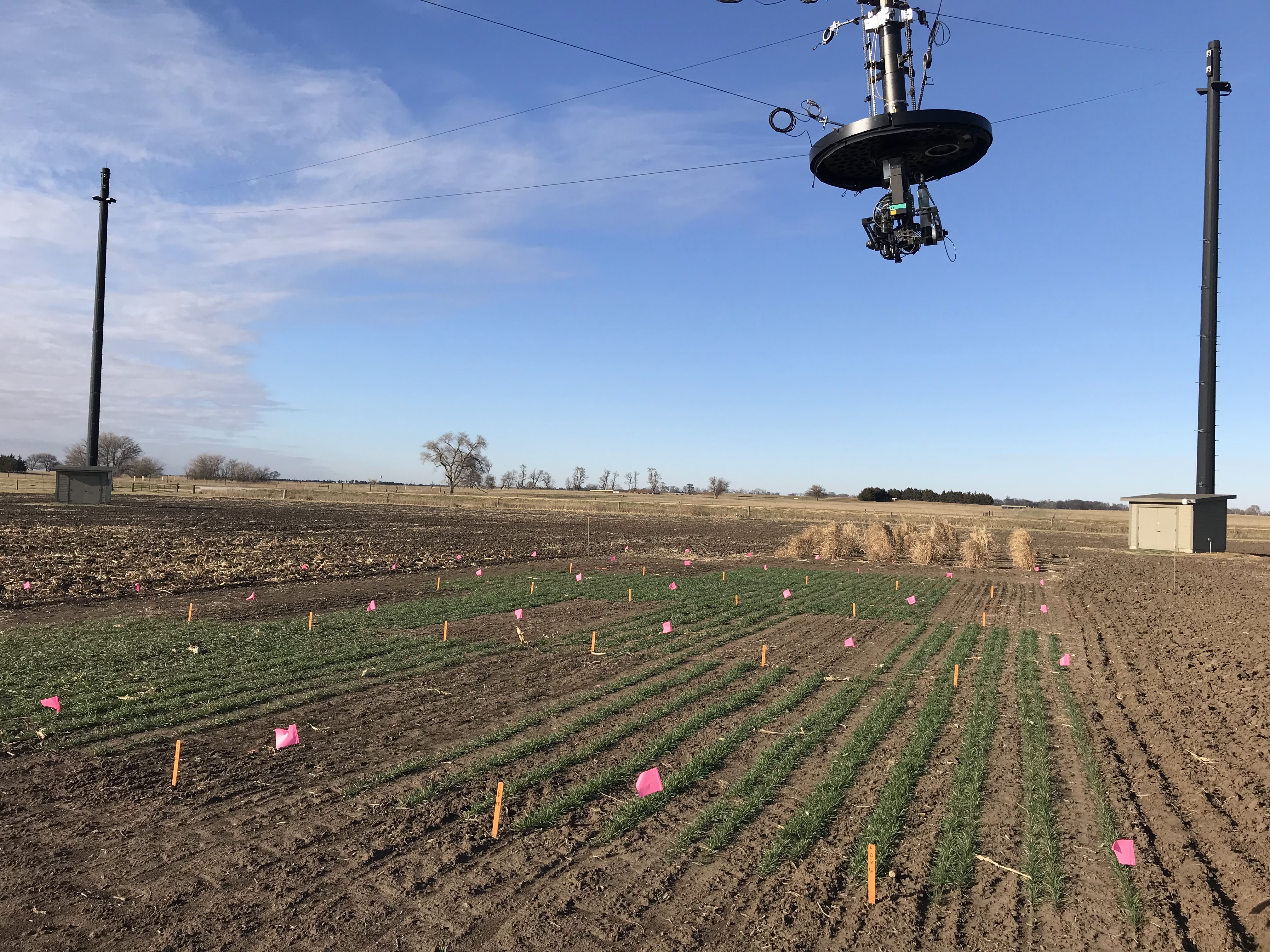
In the winter, Nebraska cropland has a lot of untapped potential. Only about 4% of farming acres in Nebraska use cover crops, according to Katja Koehler-Cole, soil health management extension educator for the Eastern Nebraska Research, Extension and Education Center (ENREEC).
“There’s lot of possibilities, but not a lot is known about the different species you could use, or the differences in varieties of different species,” she said.
Koehler-Cole is working on a team that’s trying to bring more awareness to the benefits of cover crops and find cover crop varieties that are best suited to Nebraska cropping systems. The project is using phenotyping to bolster its data collection.
The main goal of the project is to test varieties of dozens of cover crop species, grown by themselves and in mixes. Andrea Basche, assistant professor of agronomy and horticulture, is the principal investigator.
The five-year project received $1 million in funding from the United States Department of Agriculture Natural Resources Conservation Service and started in 2021. Outreach for farmers, extension educators and students is the other major goal of the project. This includes teaching and awareness components through workshops, field days, and classroom activities.
Grown between the harvest of one cash crop and planting of the next cash crop, cover crops protect and anchor the soil, recycle nutrients, and add biodiversity, especially when different species are grown in mixes. They take up extra nitrate — which can prevent potential groundwater leaching — and sequester carbon in the soil. Over time, cover crops can increase organic carbon, which in turn can provide additional soil benefits. Another purpose they can serve is helping extend cattle grazing seasons. However, it is currently not a widely used practice in the state.
Currently, Nebraska farmers mostly grow winter cover crops, planted in the fall and killed in the spring. Only species that survive Nebraska’s hard winters can be grown during this time. The most common winter cover crop is cereal rye.
“There’s lots of other times we could plant a cover crop. After wheat (harvest), there’s usually a long fallow period until you plant your crops next spring. There are many species that could be planted during this time, but we do not have much information on their performance,” she said. “In early spring you could establish cover crops, or you could have full-season cover crops for soil health and as a forage.”
One facet of the research is gathering in-depth data on the cover crops through the ENREEC site near Mead. This site includes cereal rye, winter wheat, winter triticale, hairy vetch and canola, a much smaller selection than at the other sites. At the other sites across Nebraska, researchers plant 20 to 30 different cover crops.
The site allows non-destructive data sampling through the Spidercam, an automated cable suspended carrier system. The Spidercam holds multiple cameras that can be accurately positioned over a small plot for sensing and plant imaging. It measures ground cover and crop height every other week.
Team members supplant this data with biomass measurements every fall and spring to correlate it to biomass production.
While other sites gather data through biomass sampling and drone flights, the site allows much more in-depth data by taking samples every other week. It carries the additional benefit of not being as time-consuming as other sampling methods.
“That data has been really, really interesting and we hope it will be super useful to producers in the state, because you get an idea of which cover crops are the fastest in covering the ground,” Koehler-Cole said.
Next year’s work will shift to sharing their research findings with producers and stakeholders. At the Spidercam site, they will complete the second and final year of data collection.
The researchers plan to complete two more years of cover crop variety trials, for three years of data collection. Collaborators Holland Computing Center are also using the data to develop cover crop models.